I was finally able to do something for another member who has helped many of us with VFD's and numerous other topics. For myself, Mark (mksj) helped me transform my lathe into an incredible piece of equipment and brings a smile to my face every time I use it. Mark purchased a 3 ton arbor press and needed a stand for it. I was able to build it with scrap or left over remnants from past jobs. A win win for him and I.
I started with a piece of flat 1/4"x 8" flat strap. The press body is 8" wide so it made sense to start with this. I felt the 1/4" strap stock would flex and or distort during use and welding. Marks work space is shared with two vehicles and with other equipment so space is limited. A small foot print was a consideration during the design. I opted to use 1.5"x 1.5" x 14 gauge for the legs with a 15º angle to provide stability while rolling and using. The bottom of the base plate was beefed up with 3/8" x 1" flat bar hot rolled. As most of you know, HR stock has rounded edges and can be challenging to square up, plus I wanted a nice flat fit, so I milled one edge using a carbide facing cutter at 600RPM with light oil in a single pass (gang stacked).
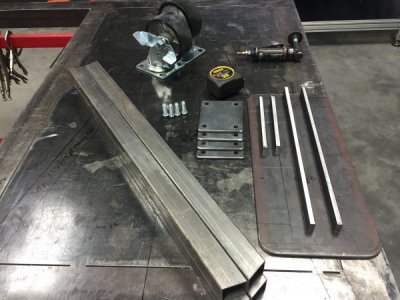
The castors where also "take offs" from some HF 44" toolboxes I used for my island workbench build so no $$ spent there and are more than enough for smooth rolling.
The castor flanges where sheared and punched on the iron worker in short order.
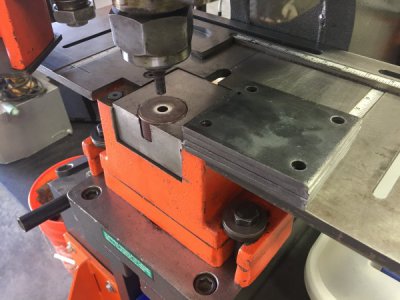
Edges and corners rounded using a 12" disc sander for a nice match to castors.
The base plate was plasma cut to match the opening or business end of the press allowing longer shafts to be pressed. The 3/8" stiffeners or ribs really worked out nice keeping the base plate flat and rigid keeping the weight down. Two 1/4" x 1" tabs (drilled/tapped) secure the body side to side while the two 5/8" holes on the body allow bolts to secure the body to the base plate.
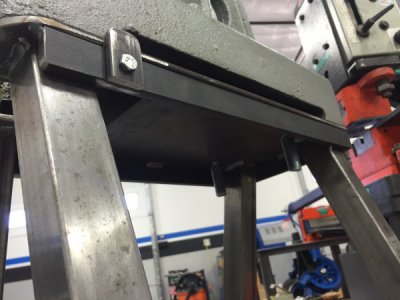
A shelf was added 6" up from the bottom castor flanges, this will allow sweeping the floor without much drama. 1/8"x 1.5" x 1.5" angle iron makes for a good shelf and also stiffens the legs for a overall rigid rolling stand. A thin sheet of steel will fit on the shelf for those special spacers one makes over time and any other tooling Mark will make to go with his press.
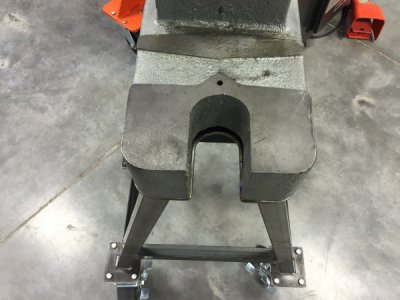
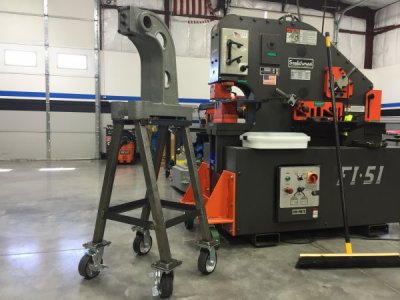
She rolls nice and maneuvers well. I'm debating a short handle for the front of the stand that would be welded to the front legs about 4-6" below the base plate with a U bend keeping the "mouse hole" clear/open.
Next up, prime and paint. I think he'll like it.
After cleaning up my mess and looking forward to a shower, the Fed-Ex guy showed up a day early.....So, another few hours spent prepping my daily driver for a new radiator. It seems the 34 year old radiator is still available from Japan. I scored it from a land cruiser forum member for $299. (local dealer wanted $599) who works at a Toyota dealership on the east coast and takes care of cruiser heads like myself.
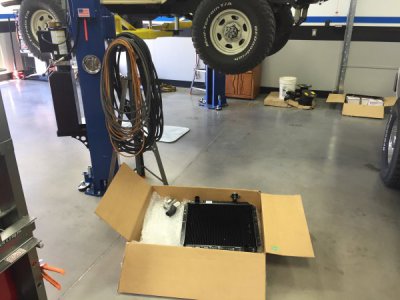
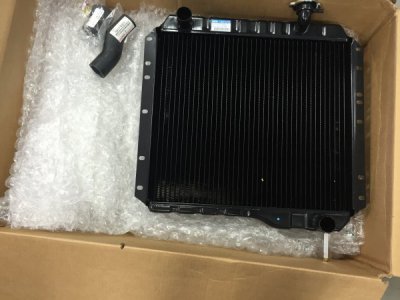
Guess what I'm doing tomorrow after shift hehe.
Alright, gentlemen, turn and burn and thanks for looking.
Paco








